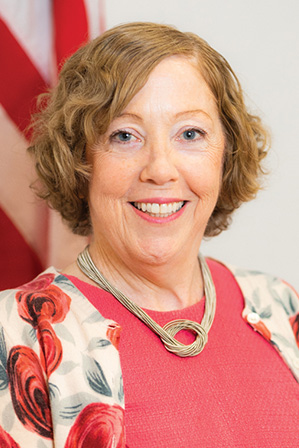The Foreign Service by the Numbers
Where We Stand
BY JULIE NUTTER

The start of the new year seems like the perfect time to update our members with recent facts and figures on the U.S. Foreign Service.
The information comes in handy for AFSA’s Speakers Bureau members who volunteer to tell the story of the Foreign Service. But it’s also useful for active-duty members, whether they are writing testimony for a principal or submitting an article to The Foreign Service Journal.
Personnel Numbers. Let’s start with the Foreign Service itself. The Foreign Service is in 276 posts abroad, and FS members spend, on average, two-thirds of their careers overseas. The latest personnel numbers show that the Foreign Service as a whole, counting all agencies, stands at approximately 15,600 members.
- State is the largest group at the end of Fiscal Year 2019, with 13,790 Foreign Service members: 7,999 generalists and 5,791 specialists (consular fellows are counted by State Human Resources as specialists).
- USAID has nearly 1,700 FSOs, with plans to hire 150 more.
- The Foreign Commercial Service has 229 members at more than 75 posts worldwide.
- The Foreign Agricultural Service has 150 to 165 FS personnel and APHIS has approximately 40, with FAS aiming for 20 or more new FS trainees in its December 2019 assessment process.
- The U.S. Agency for Global Media has about 20 to 25 Foreign Service employees worldwide.
For comparison’s sake, the Department of Defense has 1.3 million active-duty military members and about 800,000 reservists.
Diversity. The Foreign Service recruits with diversity and inclusion in mind, and benefits from Pickering, Rangel and Payne (USAID) fellowships and other programs, which bring in about 100 Foreign Service members per year.
Diversity levels at recruitment and at lower grades are encouraging. As FS members rise through the ranks, however, the number of minorities and women thins out.
For example, at the end of FY2019, minority representation in State’s Senior Foreign Service was low. As of Sept. 30, African Americans comprised 2.9 percent of the Senior Foreign Service, Hispanic Americans 5.3 percent, and Asian Americans 3.6 percent.
In the words of AFSA President Eric Rubin, “We can do better. We must do better.” To that end, the AFSA Governing Board has created a Committee on Diversity and Inclusion, so AFSA can better monitor this phenomenon.
Attrition. AFSA continues to be concerned with attrition numbers (via retirement and voluntary or nonvoluntary resignation), which can be affected by many factors, including the existence of a diversity-friendly culture (or lack thereof), management policies and leadership, and the availability of senior opportunities (or lack thereof).
State has informally told us that attrition remains within historical annual averages (3 to 4 percent for FSOs; 4 to 6 percent for FS specialists), but these figures were gathered before the last quarter of the calendar year, when most departures take place. We will know more in the first months of 2020.
We have some anecdotal evidence that in smaller Foreign Service constituencies, attrition is higher than normal. Baby boomer retirements could play a part, but so could poor management or management bias, especially in cases of mid-level attrition.
FSOT. Over the past year, much attention has been paid to the number of test takers for the Foreign Service Officer Test, which is usually seen as a proxy for interest in a Foreign Service career. In calendar year 2019, 9,294 people took the FSOT—not unusual if we look at the past 20 years or so. The test is given in February, June and October.
Over the past two decades, there have been many calendar years in which test takers numbered in the 10,000 to 20,000 range, totals that appeared also in the 1980s and 1990s. (The anomalous year of 2002— after the 9/11 attacks—saw 31,000 test takers.)
Only two times in the past 20 years were the calendar year FSOT test-taker totals below 9,000—in 2000 and 2008.
This is probably because the economy was roaring just before the dot-com bust and the financial crisis (or Great Recession), respectively; there tends to be an inverse correlation between the job market and FSOT test-taker numbers.
In general, if FSOT totals trend below 9,000, AFSA starts to worry. This year, though June figures were below 3,000, October numbers kept the annual total above 9,000.
AFSA will continue to track data relevant to the Foreign Service, particularly attrition and diversity numbers. One of AFSA’s primary roles in the past few years has been to provide unbiased information on the U.S. Foreign Service to all who ask, and we will continue to take that role very seriously.
Please feel free to reach out to me or to my Labor Management colleagues with your questions about the Foreign Service. Happy New Year!

